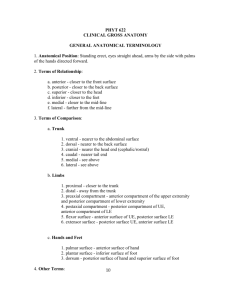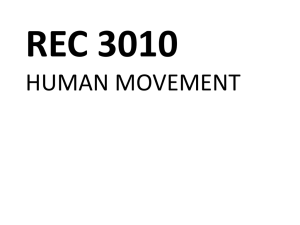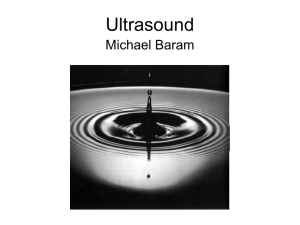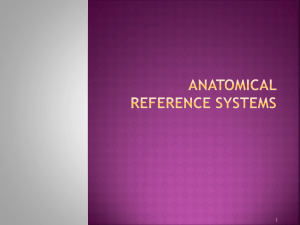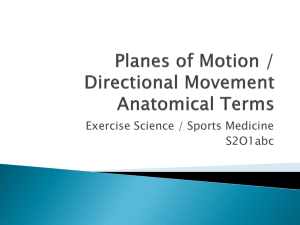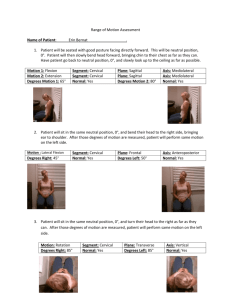Joint Analysis
advertisement
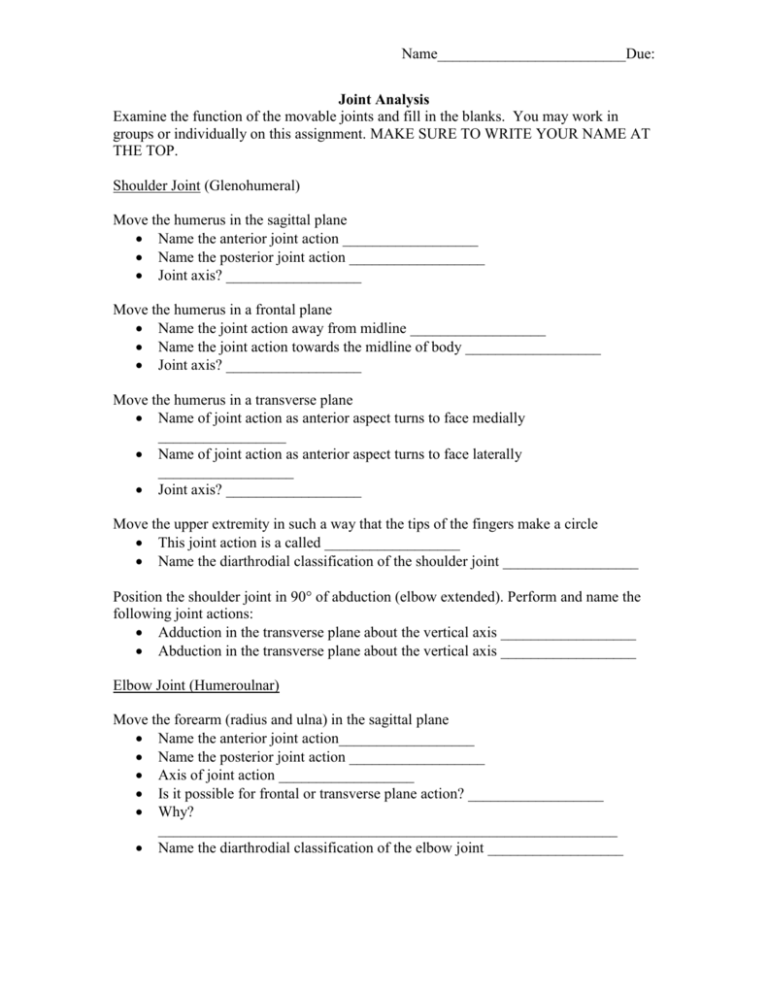
Name_________________________Due: Joint Analysis Examine the function of the movable joints and fill in the blanks. You may work in groups or individually on this assignment. MAKE SURE TO WRITE YOUR NAME AT THE TOP. Shoulder Joint (Glenohumeral) Move the humerus in the sagittal plane Name the anterior joint action __________________ Name the posterior joint action __________________ Joint axis? __________________ Move the humerus in a frontal plane Name the joint action away from midline __________________ Name the joint action towards the midline of body __________________ Joint axis? __________________ Move the humerus in a transverse plane Name of joint action as anterior aspect turns to face medially _________________ Name of joint action as anterior aspect turns to face laterally __________________ Joint axis? __________________ Move the upper extremity in such a way that the tips of the fingers make a circle This joint action is a called __________________ Name the diarthrodial classification of the shoulder joint __________________ Position the shoulder joint in 90 of abduction (elbow extended). Perform and name the following joint actions: Adduction in the transverse plane about the vertical axis __________________ Abduction in the transverse plane about the vertical axis __________________ Elbow Joint (Humeroulnar) Move the forearm (radius and ulna) in the sagittal plane Name the anterior joint action__________________ Name the posterior joint action __________________ Axis of joint action __________________ Is it possible for frontal or transverse plane action? __________________ Why? _____________________________________________________________ Name the diarthrodial classification of the elbow joint __________________ Name_________________________Due: Radioulnar Joints In the anatomical position the radioulnar joints are in __________________ From supination, action at the radioulnar joints results in __________________ The diarthrodial classification of these joints is __________________ Wrist Joint Move the hand in the frontal plane Name the joint action away from the midline __________________ Name the joint action toward the midline __________________ With the radius and ulna firmly fixed, attempt transverse plane joint action. Can this be done? __________________ With the radius and ulna still firmly fixed, attempt to describe a circle with the tips of the fingers. Can this be done? __________________ Name the joint action __________________ Name the diarthrodial classification of the wrist joint __________________ Hip Joint Examine joint actions in all planes from the anatomical position Joint Actions _________/_________ Plane __________________ Joint Actions _________/_________ Plane __________________ Joint Actions _________/_________ Plane __________________ Name the diarthrodial classification of the hip joint __________________ Knee Joint Move the tibia and fibula in a sagittal plane Name of posterior joint action __________________ Name of anterior joint action __________________ Joint axis? __________________ With the knee flexed (as in a sitting position) rotate the tibia and fibula so that the anterior aspect turns medially and then laterally. What are these joint actions called? Internal __________________ around the vertical axis External __________________ around the vertical axis Name the diarthrodial classification of the knee joint __________________ Name_________________________Due: Ankle Joint (Talocrural) Move the foot in a sagittal plane Name the joint action in which the dorsal surface of the foot moves toward the anterior aspect of the leg __________________ Name the joint action in which the dorsal surface of the foot moves away from the anterior aspect of the leg __________________ Joint axis? __________________ Name the diarthrodial classification of the ankle joint __________________ Intertarsal Joints (talocalcaneal, taloavicular, calcaneocuboid) Move the foot so that the sole faces medially This is a combination of adduction and lateral rotation joint actions named __________________ (sometimes called supination) Move the foot so that the sole faces laterally This is a combination of abduction and medial rotation and is named __________________ (sometimes called pronation)

